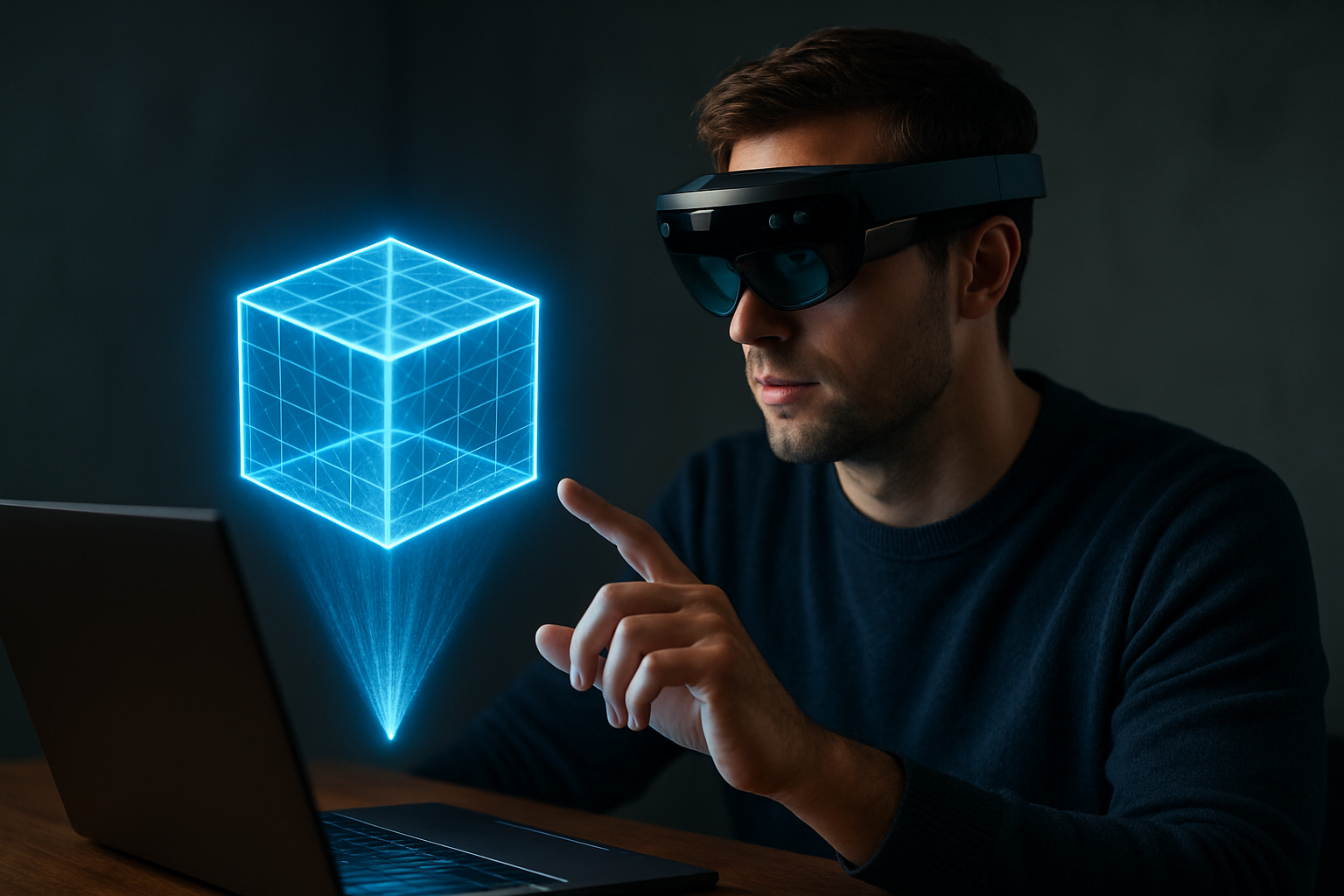Holographic Lenses: The Next Frontier in Wearable Display Technology
In a world where digital interfaces are becoming increasingly integrated into our daily lives, a groundbreaking technology is poised to revolutionize how we interact with information. Holographic lenses, a cutting-edge development in wearable display technology, promise to blend the digital and physical worlds in ways we've only dreamed of. This innovative approach to augmented reality (AR) could transform everything from how we work and play to how we navigate our cities and access information on the go.

How holographic lenses work
At the heart of holographic lens technology lies a complex interplay of optics and photonics. These lenses consist of multiple layers of nano-scale structures that can bend and shape light with unprecedented precision. When light from a miniature projector passes through these structures, it creates a three-dimensional image that appears to float in space before the user’s eyes.
Advancements in miniaturization
One of the most significant challenges in developing holographic lenses for wearable devices has been miniaturization. Recent breakthroughs in nano-fabrication techniques have allowed researchers to create holographic elements that are thin enough to be incorporated into normal-looking eyeglass frames. This development marks a crucial step towards making AR technology truly wearable and socially acceptable.
Applications beyond entertainment
While the gaming and entertainment industries are obvious beneficiaries of holographic lens technology, its potential applications extend far beyond. In healthcare, surgeons could use holographic displays to visualize complex procedures in real-time, overlaying patient data and 3D anatomical models onto their field of view. Architects and engineers could use these lenses to project virtual buildings and structures onto real-world sites, facilitating more intuitive design processes.
The impact on productivity and communication
In the workplace, holographic lenses could revolutionize how we collaborate and share information. Virtual meetings could become truly immersive experiences, with participants appearing as if they were in the same room. Data visualization could take on new dimensions, allowing analysts to manipulate and explore complex datasets in three-dimensional space.
Challenges and considerations
Despite the exciting potential of holographic lenses, several challenges remain. Power consumption is a significant concern, as these devices require substantial processing power to render high-quality holograms in real-time. Additionally, issues of privacy and data security must be addressed, as these wearables could potentially capture and process vast amounts of personal and environmental data.
The road to market
While holographic lenses are still primarily in the research and development phase, several tech giants and startups are racing to bring this technology to market. Industry analysts estimate that the first consumer-ready holographic lens devices could hit shelves within the next 3-5 years, with prices initially ranging from $1,000 to $3,000. As manufacturing processes improve and economies of scale come into play, these costs are expected to decrease significantly.
A glimpse into the future
As holographic lens technology continues to evolve, we can expect to see increasingly sophisticated applications that blur the line between the digital and physical worlds. From enhancing our perception of reality to creating entirely new forms of artistic expression, the possibilities are limitless. The advent of holographic lenses marks not just a technological milestone, but a fundamental shift in how we interact with information and each other in the digital age.





